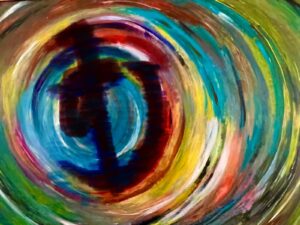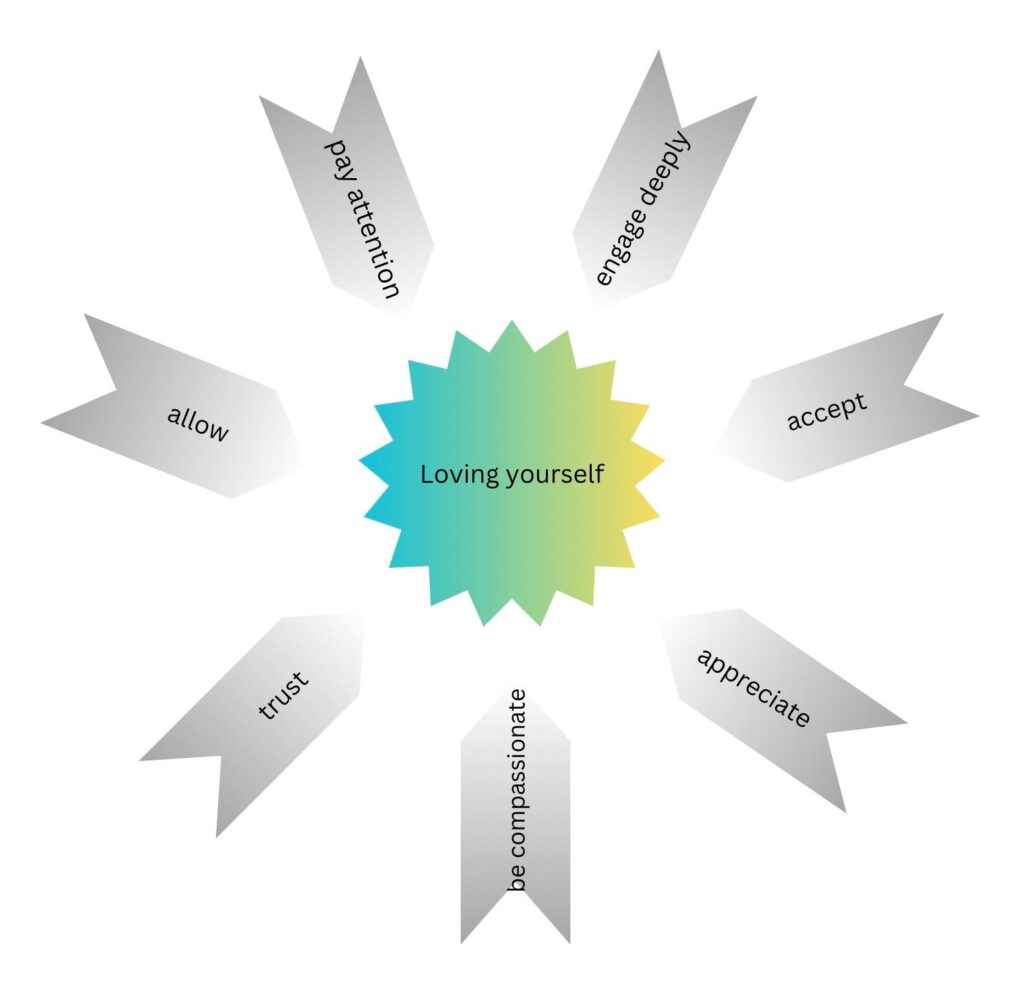
Isn’t it interesting how sometimes opening up to a stranger feels easier than confiding in someone we love? Have you ever found yourself sharing a story that has troubled you for years with a fellow traveler on a plane or at some unexpected spot during a solo trip? It’s often even simpler to be fully present with non-human beings – our pets, stray animals, trees, or a forgotten piece of cloth – usually in comfortable silence.
But why is allowing ourselves to be truly us so difficult when we are surrounded by others, especially our loved ones and acquaintances?
What prevents us? Is it the fear of rejection, failure, or the discomfort of being vulnerable with those we have relationships with? Are we afraid of somehow damaging those connections?
Do we fear making mistakes will cost us love and respect?
Is it always others’ potential rejection? Or is it sometimes our own rejection of our authentic selves? Have we even allowed our true selves to emerge enough to consider befriending them? Forget friendship for a moment – have we even had the courage to acknowledge their existence?
Have we dared to embrace our vulnerabilities and truly act and feel who we are?
Vulnerability is often described as the courage to be open, authentic, and honest—even when it means facing rejection, failure, or discomfort. Embracing it isn’t a weakness; it’s a profound strength. It deepens our connections, fosters emotional growth, and builds resilience.
But how truly connected are we to our own vulnerability? Do we welcome it despite our perfectionism, expectations, or fears? Are we genuinely friends with it?
Not really, often. Sometimes, we prefer to hide our vulnerabilities, wearing our survivor masks to navigate life, losing touch with our inner selves in the process. Sometimes, we don’t even realize we’re wearing these masks. While masking might seem like a viable way to bypass the pain of exposing our vulnerabilities, it ultimately causes more harm than good. We become someone we are not, losing connection with joy, inner peace, and trust. We block others from reaching our deeper selves, preventing genuine connections. Then, we lament the mundanity of our lives, filled with endless tasks. We complain about the lack of love, and we often keep our deep-seated loneliness a secret because that feels unacceptable – something to be hidden away.
Do you see what we’ve done? With the intention of protection, we construct a life that feels suffocating.
So, why do we do this even though, intellectually, we understand that embracing our vulnerabilities is the only path to self-acceptance and a more fulfilling life? Because it’s far from easy.
When we conceal our vulnerability, we often experience a range of heavy and conflicting emotions:
- Fear: Fear of being judged, misunderstood, rejected, or abandoned; fear of appearing “weak” or “not good enough.”
- Shame: A sense that something is inherently wrong or broken within us; feeling unworthy of love or belonging if our “true self” were revealed.
- Loneliness: Hiding vulnerability creates emotional distance from others; even in a crowded room, we might feel unseen, unheard, or isolated.
- Anxiety: Constant worry about being “found out” or exposed; fear about the sustainability of the mask we wear.
- Frustration: Feeling trapped between the desire for authenticity and the fear of it; anger at ourselves for not being able to “just be real.”
- Sadness: Grieving the lost opportunities for genuine connection; a quiet sorrow over not being fully known or understood.
- Guilt: Feeling guilty for not trusting others or not showing up as our true selves; guilt over the act of pretending or “hiding.”
- Self-Doubt: Questioning our worth, our courage, and our ability to be loved as we are; wondering if we even know who we are beneath the mask.
- Helplessness: Feeling powerless to break the pattern of hiding; believing that revealing ourselves might worsen things.
- Resentment: Toward others for not “seeing” us despite our hiddenness; toward ourselves for not being able to be vulnerable and open.
Actually, these feelings arise when we go against the references we consider ideal, when we deviate from them. Even though the references in our minds seem to belong to us and appear to be universally true, most of the time they have nothing to do with our essence; they are not much different from teachings or beliefs. In short, they are baseless. Because we cannot realize this, it’s not easy to avoid blaming, and silencing ourselves. This is actually like getting angry at a poppy for not being a daisy.
Hiding vulnerability offers short-term protection from pain but often leads to long-term emotional suffering. It creates a sense of “safety” at the cost of deep connection, self-expression, and inner freedom.
The reality is more interesting than it seems. The vulnerability we try to bury isn’t just hidden from others; it’s hidden from our own awareness. Simply seeing it offers it a chance to breathe, allowing our authentic selves to thrive. But we often choose to ignore it, perhaps because we have no idea what to do with it. This neglect leads to a disconnection, and eventually, we may not even notice its presence.
But the exploration doesn’t end there; it deepens as we delve further into our emotional landscape. Vulnerability isn’t solely linked to undesired circumstances. Don’t you remember the urge to hide your joy or biting your lip when something really good happened, fearing that something really bad might follow? Do you recall avoiding feeling good about yourself, as if burdened by guilt or shame, as if simply being human were a source of self-doubt? If experiencing the full spectrum of human emotion isn’t vulnerability, then what is?
Holding onto unexpressed vulnerability tends to create an emotional bottleneck. The more we suppress or deny it, the more these emotions accumulate. However, by learning to embrace and express vulnerability in healthy ways, we can release these pent-up emotions and create space for healing, growth, and deeper connections.
Here are some practices that can help us connect with and express our vulnerability:
- Body-Focused Journaling: This practice encourages you to focus on your physical sensations and then write about them in a journal. For example, ask yourself: “Where do I feel fear in my body? What shape or color would that fear take?” This method combines body awareness with writing, allowing you to articulate your emotions and recognize how they manifest physically.
- Breath & Sound Painting: This practice involves using breath and sound to create art. Engage in breathing techniques or sound-making (like humming, sighing, or chanting) while creating art. This helps you embody your emotions through breath and voice, forging a powerful link between emotional, physical, and creative expression.
- Body Mapping of Emotions: Like you scan in the body-focused journaling you can draw your body and color your emotions (e.g., tightness in the chest for fear, warmth in the heart for love). This practice helps you connect emotional experience to physical sensations. Practice this at different times and observe the colors and shapes, feel the physical sensations.
- “If You Really Knew Me…” Circle: This practice builds intimacy without pressure. You can play with your friends, partner, and family. In the circle participants complete the sentence, “If you really knew me, you would know that…” without pressure. Experience how you feel in the space where you don’t expect anything from your playmates. You can play this game in silence also. You can answer the questions with your inner voice. Remember, it is important to hear your own voice before letting others hear or hearing others’.


